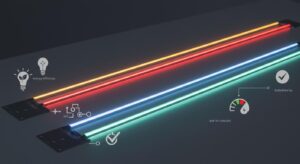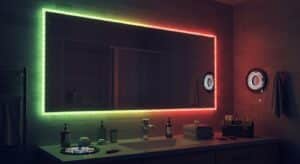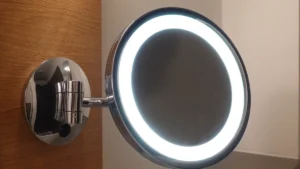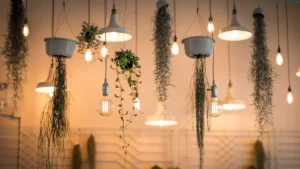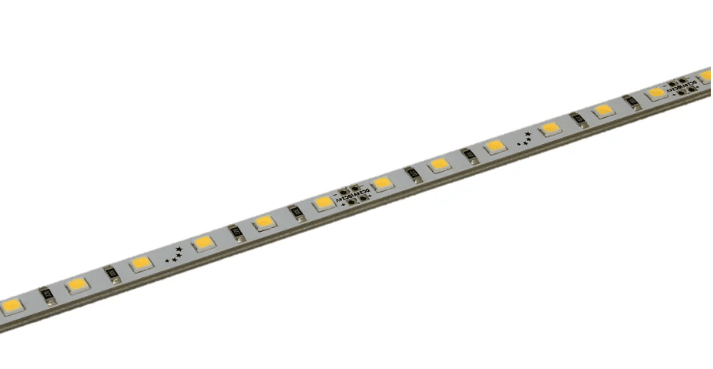
Have you ever wanted to light up your home easily? LED rigid light strips make it super simple! These lights are strong, easy to use, and great for many DIY projects. You can add light under cabinets or make a cozy spot. They work well and last a long time, so no need to replace them often. With some creativity, you can make your space look amazing.
Tip: Begin with one small project to see how LED rigid light strips can quickly improve your room’s look.
Key Takeaways
LED rigid light strips are simple to set up. They are great for DIY projects. Start small to see how they improve your space.
These lights are strong and last up to 83,000 hours. This means fewer replacements and more money saved.
LED rigid light strips use less energy. They lower power bills but still give bright, steady light.
They can be used in many ways. Use them for home décor, work lighting, or outdoor areas.
Pick the right color for your project. Warm white makes spaces feel cozy. Cool white gives a modern look.
Understanding LED Rigid Light Strips
Features of LED Rigid Light Strips
LED rigid light strips have many features that make them unique. They are reliable, flexible, and work well in different settings. Here’s what makes them special:
High Color Accuracy: These lights show colors clearly and brightly. With a CRI over 98 and R9 above 90, they are great for places like art rooms or stores where colors matter.
Long Lifespan: These lights last a long time—up to 83,000 hours! You won’t need to replace them often, unlike regular lights.
Waterproof Design: Many of these strips are waterproof with an IP68 rating. This means they are safe to use outside or in wet areas.
Customizable Options: You can get these strips in straight, curved, or angled shapes. They also come in different densities and can be adjusted to fit your needs.
Energy Efficiency: These lights use less energy but still shine brightly. They save money and are good for the environment.
Here’s a simple table of their key features:
Feature | Details |
|---|---|
Color Consistency | Made with care for even color quality. |
High CRI | CRI > 98 and R9 > 90 for vivid colors. |
Lifespan | Lasts up to 83,000 hours, tested for quality. |
Waterproofing | IP68 rating for safety in wet areas. |
Customization | Choose shapes, density, and controls. |
Applications | Works for home, business, and decoration. |
These features make LED rigid light strips a smart choice for many uses, from decorating your home to lighting up workspaces.
Differences Between Rigid and Flexible LED Strips
It’s important to know how rigid and flexible LED strips differ. Each type has its own benefits, so pick based on your project needs.
Structure: Rigid strips are fixed on strong surfaces like aluminum or PCB. They are great for steady, straight lighting. Flexible strips bend easily, making them good for curved or uneven spaces.
Durability: Rigid strips are tough and last longer. Flexible strips can wear out faster.
Applications: Use rigid strips for straight lighting like under cabinets or in displays. Flexible strips are better for creative designs or wrapping around objects.
Energy Efficiency: Both save energy, but rigid strips are slightly brighter and better for focused lighting.
Installation: Rigid strips are easy to set up in straight lines. Flexible strips take more effort to secure, especially on curves.
Here’s a quick comparison:
Feature | Rigid LED Strips | Flexible LED Strips |
|---|---|---|
Structure | Fixed on strong materials | Made to bend and curve |
Durability | Strong and long-lasting | Wears out faster |
Applications | Best for straight, fixed lighting | Great for creative, curved designs |
Installation | Easy for straight setups | Harder for curved spaces |
Energy Efficiency | Brighter and more focused | Energy-saving but less bright |
Both types are useful for DIY lighting. If you want something sturdy, go with rigid strips. For flexible designs, choose bendable strips.
Benefits of LED Rigid Light Strips for DIY Projects
Easy to Install
Putting up LED rigid light strips is super simple. They are already attached to strong materials like aluminum or PCB boards. This means they won’t bend or droop while you install them. Many come with sticky backs or pre-drilled holes, so attaching them is easy.
You can cut the strips to fit your space just right. Connecting them is also easy with plug-and-play connectors. Whether it’s for a shelf, under cabinets, or a desk, setting them up is quick and simple.
Tip: Measure your area first to avoid cutting mistakes.
Built to Last
LED rigid light strips are tough and last a long time. Their strong design makes them better at handling wear and tear than flexible strips. They also work well in tough conditions like high humidity or extreme heat.
Here’s how they perform over time:
Test Type | Results |
|---|---|
Aging Tests | COB strips kept 90% brightness after 30,000 hours. SMD LEDs kept 70%. |
Heat Tests | COB strips stayed cool at 45°C. SMD strips ran hotter at 68°C. |
Lifespan | High-quality COB strips can last over 70,000 hours. |
With this durability, you won’t need to replace them often. They are a smart choice for long-term lighting.
Saves Money
LED rigid light strips help you save money over time. They use less energy than regular lights, so your electricity bills will be lower. Their long life also means fewer replacements, saving on maintenance costs.
These strips are very useful. You can use them to decorate your home or brighten up a workspace. They give you great lighting without costing too much. It’s an affordable way to get high-quality lighting.
Step-by-Step Guide to Installing LED Rigid Light Strips
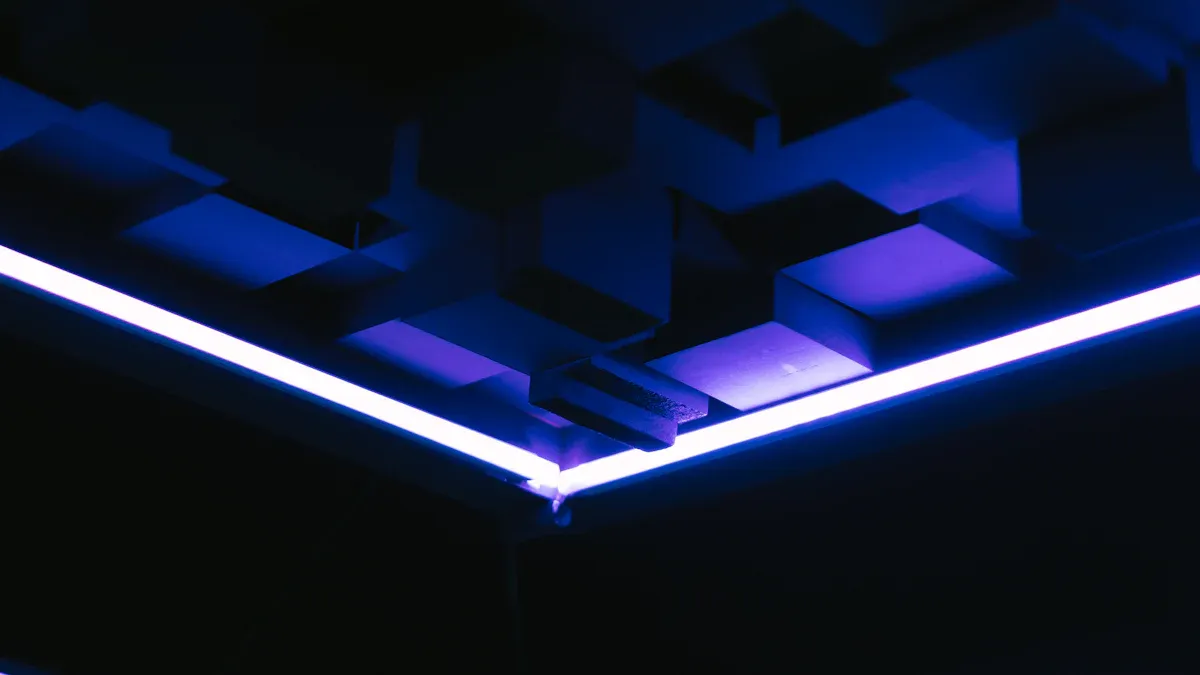
Tools and Materials Needed
Before starting, gather all the tools and materials you need. Having everything ready makes the job easier and avoids delays. Use this table to help you:
Item | Quantity | Purpose/Function |
|---|---|---|
MOSFETs IRF510 | 3 | Manage signals for RGB channels |
10K Ohm resistors | 3 | Control current for MOSFETs |
12V power source | 1 | Provides power to the LED strips |
Meter RGB LED strip | 1 | Main lighting part |
Edison or Arduino breakout board | 1 | Controls the LED strip |
Breadboard | 1 | Helps connect and test components |
Jumper wires | Some | Links parts together |
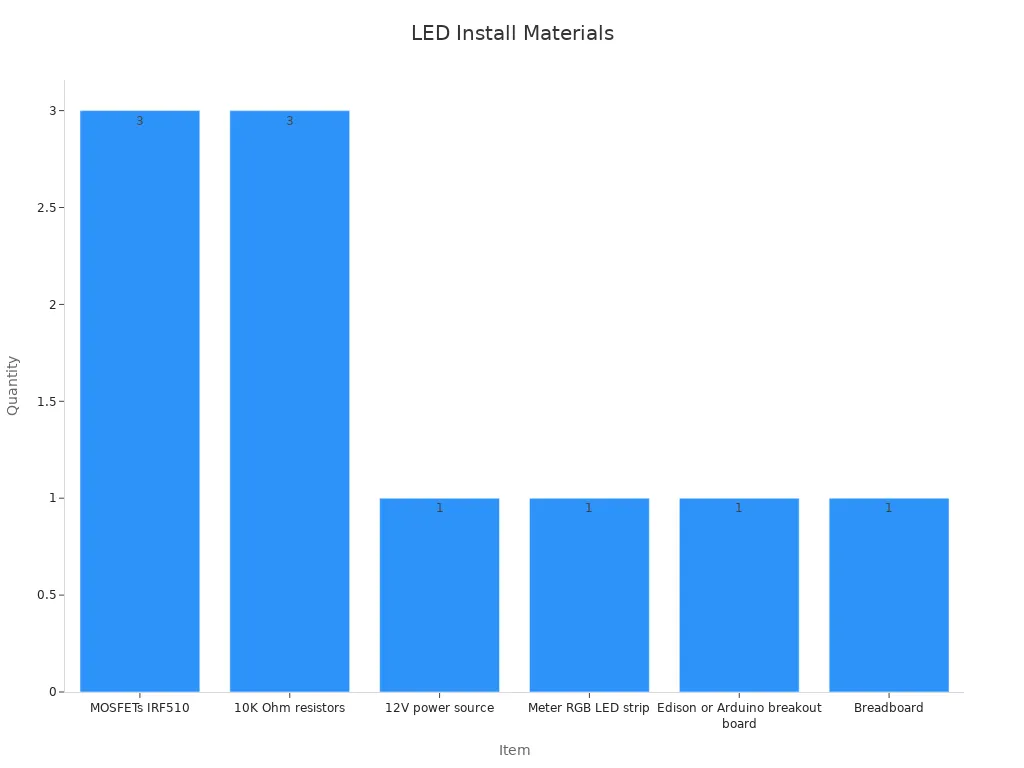
You’ll also need simple items like scissors, tape measure, microfiber cloth, and connectors. These help with cutting, cleaning, and attaching the strips.
Tip: Check your tools before starting. Missing items can slow you down.
Installation Process
Setting up LED rigid light strips is simple. Follow these steps to get it done quickly:
Gather Your Supplies
Collect your LED strips, power supply, tape measure, scissors, and connectors. Keep them close for easy access.Measure the Area
Use a tape measure to find out how much strip you need. Mark the spot where you’ll install it.Clean the Surface
Wipe the area with a microfiber cloth. A clean surface helps the adhesive stick better.Attach the Strip
Remove the backing and press the strip onto the surface. Go slowly to avoid bubbles.Trim Extra Strip
If the strip is too long, cut it at the marked points. These marks show where it’s safe to cut.Connect Everything
Link the LED strip to the power supply. Use connectors to join extra strips if needed.Turn It On
Plug in the power and switch on the lights. Check for any dim areas or loose parts.
Did you know? Most people successfully install LED rigid light strips on their first try by following these steps.
Tips to Avoid Common Mistakes
Even easy projects can have mistakes. Here’s how to avoid them:
Skipping Measurements: Always measure before cutting. Guessing can waste materials.
Not Cleaning the Surface: Dust or grease can make the adhesive weak. Clean well for a strong hold.
Overloading Power Supply: Make sure your power source can handle the strip’s wattage. Overloading can cause flickering or damage.
Cutting Incorrectly: Only cut at the marked points. Cutting elsewhere can break the strip.
Rushing the Job: Take your time. Rushing can lead to uneven lights or loose connections.
Pro Tip: If you’re new to DIY, start small. Try under-cabinet lighting first to build confidence.
Creative Uses for LED Rigid Light Strips
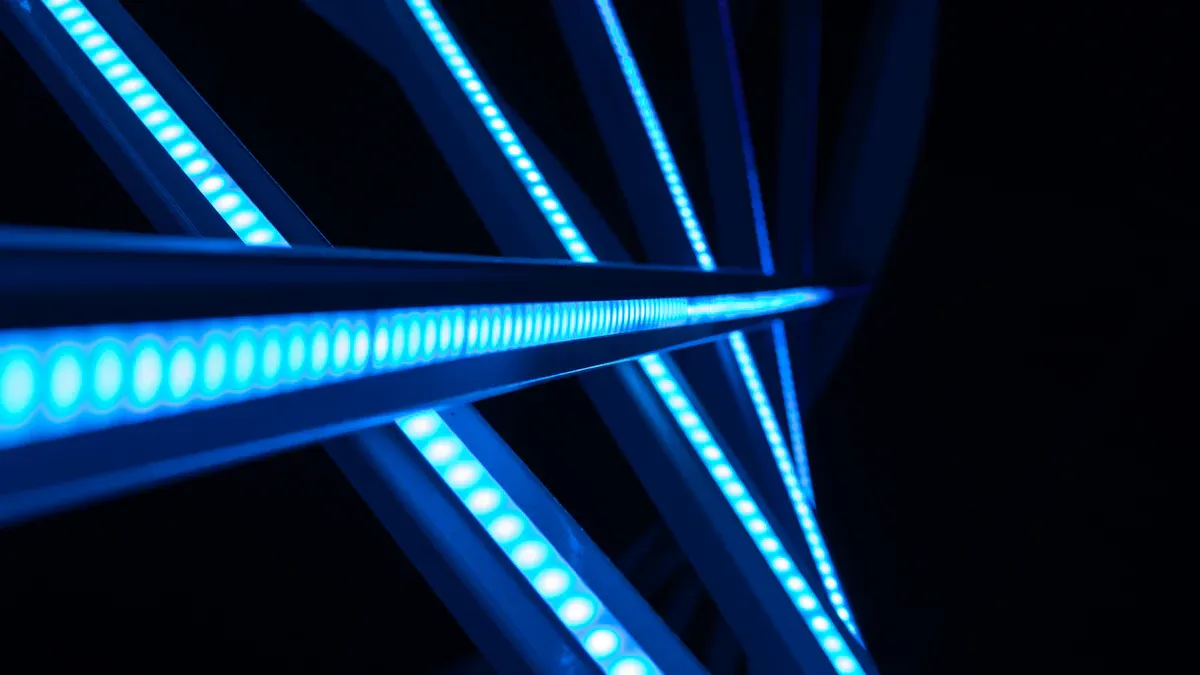
Improving Home Décor
Want to make your home look cool without spending much? LED rigid light strips are great for adding a modern style. Use them to brighten artwork, make your living room cozy, or light up shelves to show off your favorite things. Their steady, bright light makes any room feel welcoming.
Try putting them behind your TV for a neat backlight effect. It helps reduce eye strain and gives your room a futuristic look. You can also add them along stairs or under furniture for a soft glow that looks fancy. With many options, you can easily match the lights to your home’s design.
Tip: Choose warm white lights for a cozy vibe or cool white for a modern feel.
Under-Cabinet and Task Lighting
Having trouble with dark kitchen counters or workspaces? LED rigid light strips are perfect for under-cabinet and task lighting. They give bright, focused light, making it easier to chop food or read papers.
These strips fit neatly under cabinets, desks, or shelves, giving light exactly where it’s needed. Their sturdy design keeps them in place, so no sagging or uneven light. Plus, they save energy, so you can use them for hours without high power bills.
Pro Tip: Add motion-sensor LED strips under cabinets for hands-free lighting in kitchens or bathrooms.
Outdoor and Garden Lighting
Make your outdoor areas look amazing with LED rigid light strips. These lights are strong and efficient, perfect for gardens, patios, or paths. They last a long time, so you won’t need to replace them often.
Here’s why they’re great for outdoors:
Feature | Description |
|---|---|
Durability | Strong design makes them perfect for outdoor use. |
Efficiency | They save energy while giving bright light. |
Lifespan | Long-lasting, ideal for garden lighting. |
Use them to light paths, highlight plants, or add a soft glow to patios. They’re waterproof, so rain or humidity won’t be a problem. These lights make your outdoor space look great, day or night.
Did you know? LED rigid light strips can make your yard safer by lighting up dark spots.
Commercial and Retail Uses
LED rigid light strips aren’t just for homes—they’re great for businesses too. They help create a bright and welcoming space that attracts customers. These lights are perfect for showing off products, lighting work areas, or setting a cozy mood in restaurants or cafés.
Retail stores often use LED strips to highlight items on shelves or in displays. The focused light makes products look better and grabs attention. One store switched from old fluorescent lights to LED strips and noticed more customer interest in their displays. Good lighting can make products stand out and boost sales.
Offices also benefit from these lights. They give clear, even light that’s easy on the eyes, making workspaces more comfortable. One office replaced its old lights with LED strips and saw lower energy bills and happier employees. The better lighting helped workers focus and be more productive.
Here’s why businesses like LED rigid light strips:
They save energy and lower electricity costs.
Their slim design looks great in modern spaces.
They last longer, so you don’t replace them often.
They make products and spaces look more professional.
Whether it’s a shop, office, or café, LED rigid light strips are a smart choice. They’re easy to set up, long-lasting, and work well in any business space. Try them and see how they can improve your business!
LED rigid light strips are a game-changer for DIY lighting. They’re easy to install, durable, and packed with creative possibilities. Whether you’re upgrading your home décor, adding task lighting, or brightening outdoor spaces, these lights make it simple.
Ready to start? Grab some LED rigid light strips and transform your space today. You’ll love how effortless and fun DIY lighting can be!
With their versatility and long-lasting performance, these lights are the perfect choice for any project. Why wait? Let your creativity shine!
FAQ
Why are LED rigid light strips better than regular lights?
LED rigid light strips save energy and last longer. They give bright, steady light while using less power. Unlike old bulbs, they don’t get too hot or burn out fast. Their slim shape fits small spaces, making them great for DIY projects.
Can I cut LED rigid light strips to fit my area?
Yes, you can cut them! Most strips have special cutting marks. Use scissors to cut along these lines. This keeps the strip working properly. Always measure carefully before cutting to avoid mistakes.
Tip: Use connectors to join cut pieces or make the strip longer.
Are LED rigid light strips okay for outdoor use?
Yes, they are! Many LED rigid light strips are waterproof, like those with an IP68 rating. This makes them safe for patios, gardens, or paths. Just pick a waterproof type and follow the outdoor setup instructions.
Do I need special tools to set up LED rigid light strips?
No, you don’t. Simple tools like scissors, a tape measure, and a cloth will work. Some setups might need connectors or a power source. Most strips have sticky backs or holes, so they’re easy to install.
How do I pick the right color temperature for my project?
It depends on the feel you want. Warm white (2700K–3000K) gives a cozy vibe, great for bedrooms or living rooms. Cool white (4000K–5000K) looks modern and suits kitchens or offices. For colorful effects, choose RGB strips.
Pro Tip: Try different temperatures to find the best one for your space.
See Also
A Comparison of Flexible Versus Rigid LED Strips
Effective Installation Tips for RGB LED Strip Lights
Enhancing Kitchen Cabinets with LED Strip Lighting
